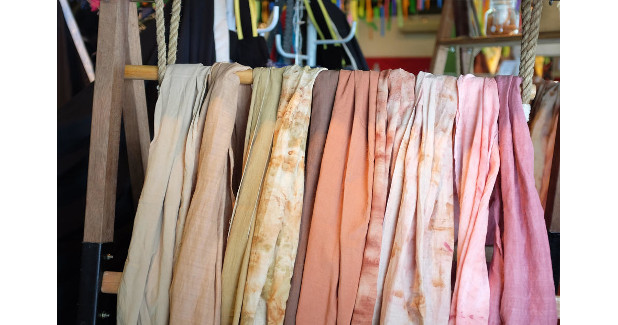
Indonesia turns to locally sourced rayon
Key players in the Indonesian textile sector have formally agreed to optimise locally sourced, sustainably produced rayon to drive the growth of the national textile industry, which is a core pillar of the country’s economy.
Key players in the Indonesian textile sector have formally agreed to optimise locally sourced, sustainably produced rayon to drive the growth of the national textile industry, which is a core pillar of the country’s economy. Representatives from the government, the textile and fashion sectors and industry associations signed a memorandum of understanding (MoU) on domestically produced rayon at a multi-stakeholders meeting in Pangkalan Kerinci, Riau, recently.
Also at the signing ceremony were Indonesian Textile Association (API) chairman Ade Sudrajat, Indonesian Association of Synthetic fibre Producers (APSyFI) secretary-general Redma Gita, Indonesia Fashion Chamber members Yufie Kartaatmaja and Ichwan Thoha, and Oline Workrobe owner Caroline Siahaan. Achmad Sigit Dwiwahjono, the Industry Ministry’s director general of chemical, textile and miscellaneous industries, said the government was committed to developing the textile industry by promoting local products and attracting investors.
The optimisation of the use of Indonesia-made rayon can play a significant role in boosting textile exports and reducing high dependency on imports to allow the country to catch up as part of the fourth industrial revolution. “We want to promote the use of locally sourced textiles, such as rayon and polyester fibres, to lessen our dependence on imported products,†said Sigit, who was accompanied by the Ministry’s Textile Director Muchdori. In the past three years, Indonesia has seen increased exports of local textiles and textile products, with the export value increasing from $11.87 billion in 2016 to $12.59 billion in 2017, and to $13.27 billion in 2018.
"The majority of export products are clothing, which comprise 63.1 per cent,†Sigit said. “This year’s export value is projected to reach $15 billion. The target will be difficult to achieve if we don’t increase national production.†The increased use of viscose rayon, or rayon, in manufacturing is expected to increase the production output of the textile industry, especially as the textile can act as a substitute for polyester and cotton. Local production of polyester and cotton still does not meet the demands of the national textile and garment industry. “Polyester production is not well developed enough, while cotton fabrics are still nearly 100 percent imported,†said Muchdori. “As all stakeholders have gathered together in one forum, we [now] know all the latest developments and we have all agreed to use local products.â€
panerai replica watches https://www.toppanwatch.com




